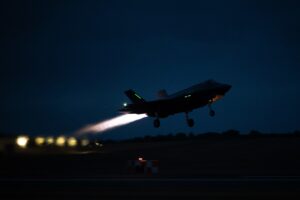
If Congress decides to continue the U.S. Air Force Advanced Engine Transition Program (AETP), integration of an AETP engine on the Lockheed Martin [LMT] F-35 would require further analysis before proceeding, the F-35 Joint Program Office (JPO) suggested. The Air Force's fiscal 2024 budget request cancels the AETP leap-ahead engine effort and provides $245 million for the Raytheon Technologies' [RTX] Pratt & Whitney Engine Core Upgrade (ECU) for the company's F135 engine. The weight of the F135 for the F-35A…














